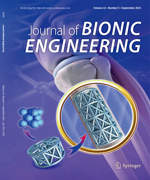The objective of this paper is to quantify the local stabilities of the neck and upper extremities (right/left shoulders and right/left elbows), and investigate differences between linear and nonlinear measurements of the associated joint motions and differences in the local stability between the upper and lower extremities. This attempt involves the calculation of a nonlinear parameter, Lyapunov Exponent (LE), and a linear parameter, Range of Motion (ROM), during treadmill walking in conjunction with a large population of healthy subjects. Joint motions of subjects were captured using a three-dimensional motion-capture system. Then mathematical chaos theory and the Rosenstein algorithm were employed to calculate LE of joints as the extent of logarithmic divergence between the neighboring state-space trajectories of flexion-extension angles. LEs computed over twenty males and twenty females were 0.037±0.023 for the neck, 0.043±0.021 for the right shoulder, 0.045±0.030 for the left shoulder, 0.032±0.021 for the right elbow, and 0.034±0.026 for the left elbow. Although statistically significant difference in the ROM was observed between all pairs of the neck and upper extremity joints, differences in the LE between all pairs of the joints as well as between males and females were not statistically significant. Between the upper and lower extremities, LEs of the neck, shoulder, and elbow were significantly smaller than those of the hip (~0.064) and the knee (~0.062). These results indicate that a statistical difference in the local stability between the upper extremity joints is not significant. However, the different result between the ROM and LE gives a strong rationale for applying both linear and nonlinear tools together to the evaluation of joint movement. The LEs of the joints calculated from a large population of healthy subjects could provide normative values for the associated joints and can be used to evaluate the recovery progress of patients with joint related diseases.

 Table of Content
Table of Content
 Table of Content
Table of Content